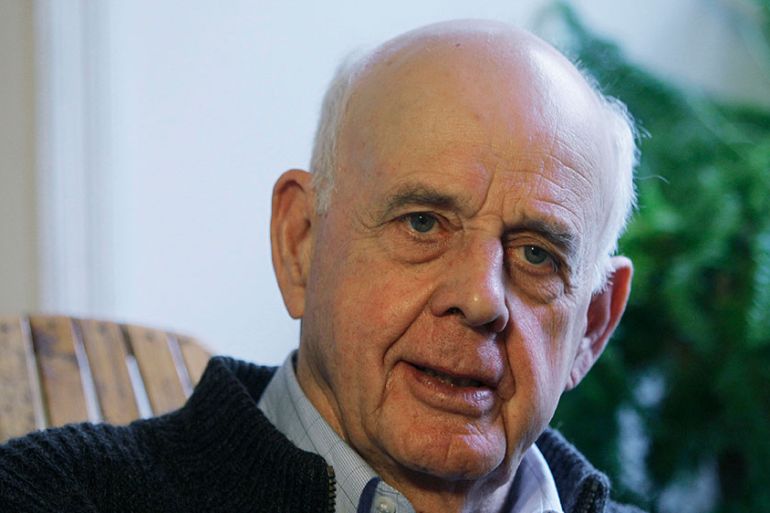Kentucky author sues to stop university from removing 1930s mural
The university said in a statement that removing the mural is necessary for the community to heal.

Award-winning Kentucky writer Wendell Berry and his wife sued the University of Kentucky on Monday to try to stop the removal of a mural that has been the object of protest for its depictions of Black people and Native Americans.
University President Eli Capilouto announced last month that the mural would be coming down.
Keep reading
list of 4 itemsFormer US police officer sentenced in killing of Black man Elijah McClain
US paramedics found guilty in 2019 death of Black man Elijah McClain
Angela Davis: ‘Palestine is a moral litmus test for the world’
The 1930s fresco mural by Ann Rice O’Hanlon shows the history of Lexington in a series of scenes, including Black men and women planting tobacco and a Native American man holding a tomahawk. Efforts to remove the mural have been made since at least 2006.
The lawsuit says Wendell Berry’s wife, Tanya Amyx Berry, is a maternal niece of O’Hanlon and her oldest living heir. It contends that the university does not have the right to remove the mural since the federal government commissioned O’Hanlon to produce it.
Wendell Berry joins lawsuit to stop University of Kentucky from removing controversial mural https://t.co/EpaWrsIZhS
— Courier Journal (@courierjournal) July 6, 2020
The lawsuit also says the federal government gave the state limited rights to the artwork and those rights transfer back to the federal government if the state chooses to no longer display it.
It also asks for an injunction to prevent Capilouto from taking any action to remove the mural while the case proceeds.
Meanwhile, the National Coalition Against Censorship made public a letter that separately asks the university to halt its plans, saying it would negate the work of Karyn Olivier, a Black artist who created an installation that responds to the mural.
“This is the first instance we are aware of in which the removal of a mural by a white artist will have the simultaneous effect of silencing the work of a Black artist,” said Christopher Finan, coalition director, in a July 1 letter to Capilouto.
“We urge you to reconsider your decision to remove the mural and to instead pursue the University’s original goal of engaging in the sustained, difficult and complex conversations that can arise in contemplation of these old and new works,” Finan said.
"The mural’s scheduled removal .. chooses silence, erasure and avoidance over engagement, investigation and real reconciliation,” said the artist who added Witness to provide more context to the original mural. #universityofkentucky #mural https://t.co/xmeexGL8st
— Lexington Herald-Leader (@heraldleader) July 6, 2020
The university said in a statement that removing the mural is necessary for the community to heal and does not change history.
“Our respect for Wendell Berry is deep and abiding. His contributions to our state and literature are profound. Moving art, however, is not erasing history. It is, rather, creating context to further dialogue as well as space for healing,” school spokesman Jay Blanton said in a statement.
“As President Capilouto wrote to our campus last month, after years of community conversation, ‘our efforts and solutions with the mural, for many of our students, have been a roadblock to reconciliation, rather than a path towards healing,'” Blanton added.
Berry, who lives Henry County, is renowned for his poetry, novels, and essays on sustainable agriculture and other subjects. In 2011, he was awarded a National Humanities Medal by then-President Barack Obama.